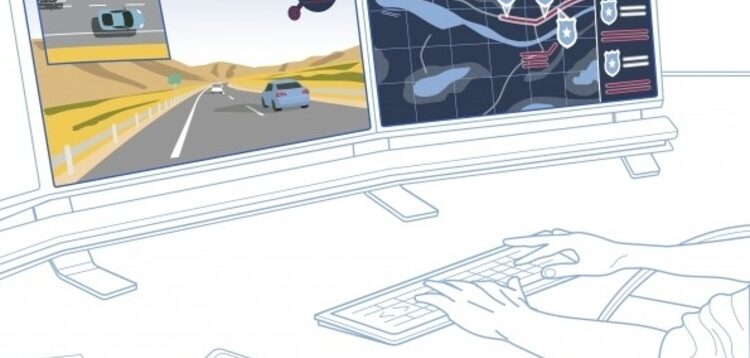According to connectivity software developer VNC Automotive, police and first responder vehicles are set to undergo a technology revolution, that will include augmented reality, mobile surveillance and remote device control. Drawing on emerging trends in consumer vehicles and cell phone platforms, the UK-based software company says it is already in discussions with forces and conversion specialists as it integrates new systems into a car’s existing infrastructure.
“We’re already seeing a focus on app-based solutions, but there is now a shift toward exploring technology including remote control functionality, the relaying of remote surveillance footage to a car’s dashboard and even augmented reality,” explained Philip Handschin, technical consultant at VNC Automotive. “However, all this functionality needs to remain intuitive and easily integrated with the large format touchscreens that are becoming commonplace in today’s vehicles.
“We can tap into the systems that OEMs build into cars, utilizing large format touchscreens and the existing hardware for communication and connectivity, but add functionality that empowers police and first responders to allow them to work more effectively and make better-informed decisions.”
Responders need to have access to the latest information – whether they’re running standard checks, on route or in pursuit. The status of team vehicles, including air support, and other emergency services, is vital, as is getting on scene quickly – taking into account traffic and other delays. All this means that information presented to the driver and passenger in a form that is quickly assimilated is vital. “The benefits that augmented reality can provide are obvious when considering navigation, call status and database information. It also means the driver need not take their eye off the road, and can make decisions with fewer distractions,” noted Handschin.
Many police and responder services are already moving to mobile devices, with smartphones replacing separate items of equipment. In some cases smart platforms and apps now form part of the daily work process, including reporting and file management, database access and team communications.
VNC says its systems can go beyond what standard consumer systems offer. For example, its IVI connectivity software includes options like the automatic locking of the car when away from the vehicle (talking with a member of the public or pursuing a suspect on foot); the ability to activate remote functions like sirens, cameras and PA systems; or even transmit location information in an emergency. It notes that its proprietary software also allows additional hardware, like rugged laptops, to be safely stowed in the boot yet seamlessly integrated via the factory fitted touchscreen.
With so much technology in each vehicle, VNC says their function moves beyond transportation and they effectively become intelligence-gathering hubs – passing valuable, first-hand data back to a central command center and allowing the coordination of teams and other services.
The company claims its solutions already allow command centers to connect with vehicles in real time, controlling certain systems such as sirens and providing crucial navigation information to officers. Extending this idea, video and other data can be transmitted and the live feed from every vehicle used to provide a valuable net of surveillance around a serious incident. Recorded and indexed this could prove vital as evidence for later convictions.
“We’ve worked on factory-equipped vehicles like the Dodge Charger Pursuit vehicle in the USA, as well as with conversion companies in the UK and North America, and are in discussion with separate police forces across these regions. The US market is catered for by the OEMs, with vehicles supplied straight from the production line, but the economics are not the same in the UK. We’re the bridge in the middle, working directly with installers as well as operators to understand their needs and making it cost effective,” concluded Handschin.



